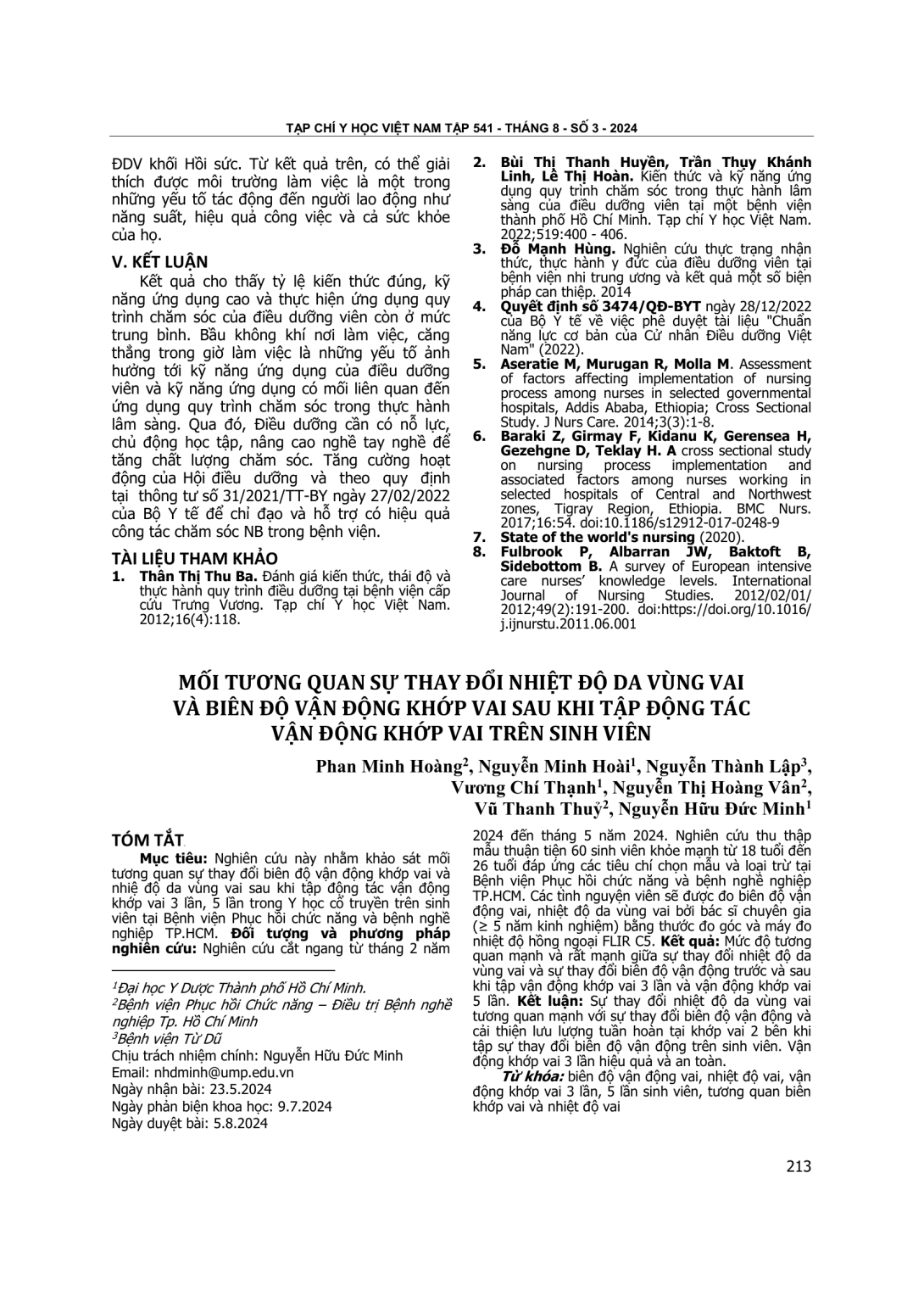
Nghiên cứu này nhằm khảo sát mối tương quan sự thay đổi biên độ vận động khớp vai và nhiệ độ da vùng vai sau khi tập động tác vận động khớp vai 3 lần, 5 lần trong Y học cổ truyền trên sinh viên tại Bệnh viện Phục hồi chức năng và bệnh nghề nghiệp TP.HCM. Đối tượng và phương pháp nghiên cứu: Nghiên cứu cắt ngang từ tháng 2 năm 2024 đến tháng 5 năm 2024. Nghiên cứu thu thập mẫu thuận tiện 60 sinh viên khỏe mạnh từ 18 tuổi đến 26 tuổi đáp ứng các tiêu chí chọn mẫu và loại trừ tại Bệnh viện Phục hồi chức năng và bệnh nghề nghiệp TP.HCM. Các tình nguyện viên sẽ được đo biên độ vận động vai, nhiệt độ da vùng vai bởi bác sĩ chuyên gia (≥ 5 năm kinh nghiệm) bằng thước đo góc và máy đo nhiệt độ hồng ngoại FLIR C5. Kết quả: Mức độ tương quan mạnh và rất mạnh giữa sự thay đổi nhiệt độ da vùng vai và sự thay đổi biên độ vận động trước và sau khi tập vận động khớp vai 3 lần và vận động khớp vai 5 lần. Kết luận: Sự thay đổi nhiệt độ da vùng vai tương quan mạnh với sự thay đổi biên độ vận động và cải thiện lưu lượng tuần hoàn tại khớp vai 2 bên khi tập sự thay đổi biên độ vận động trên sinh viên. Vận động khớp vai 3 lần hiệu quả và an toàn.
This study aimed to investigate the correlation between changes in the range of motion of shoulder joints and the skin shoulder area after performing shoulder joint exercises 3 times, 5 times in Traditional Medicine at the HCMC Hospital for Rehabilitation and Occupational Diseases. Subjects and methods of study: The cross-sectional study was conducted from February 2024 to May 2024. Convenient sampling was employed to recruit 60 healthy students aged 18 to 26 years who met the sample selection criteria and exclusions at the Functional Rehabilitation Hospital and Occupational Diseases in Ho Chi Minh City. Volunteers underwent shoulder joint range of motion measurements and shoulder skin temperature assessments conducted by expert physicians (with ≥ 5 years of experience) using a goniometer and FLIR C5 infrared thermal camera. Results: There is a strong and very strong correlation between changes in skin temperature in the shoulder area and changes in range of motion before and after performing shoulder joint mobilization 3 times and shoulder joint mobilization 5 times. Conclusions: The change in skin temperature of the shoulder area strongly correlates with the change in range of motion and improvement in circulation at both shoulder joints when performing exercises that modify the range of motion in students. Shoulder joint movement 3 times is safety and effective.
- Đăng nhập để gửi ý kiến
